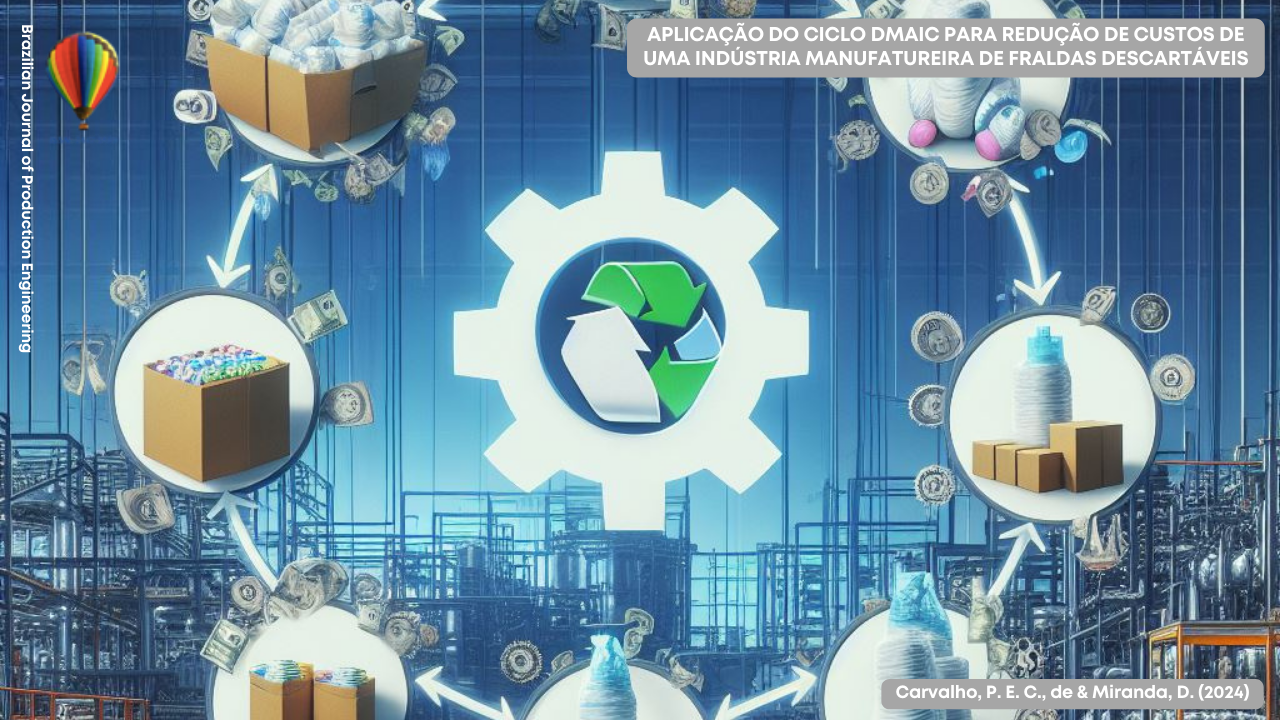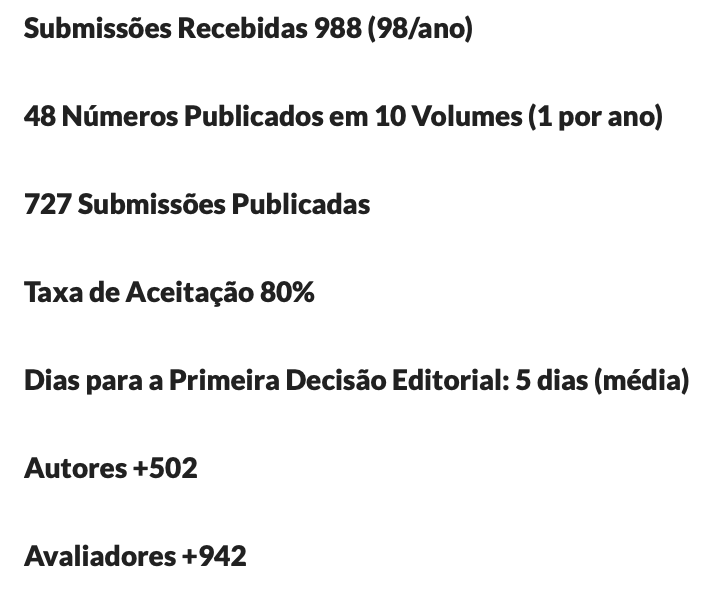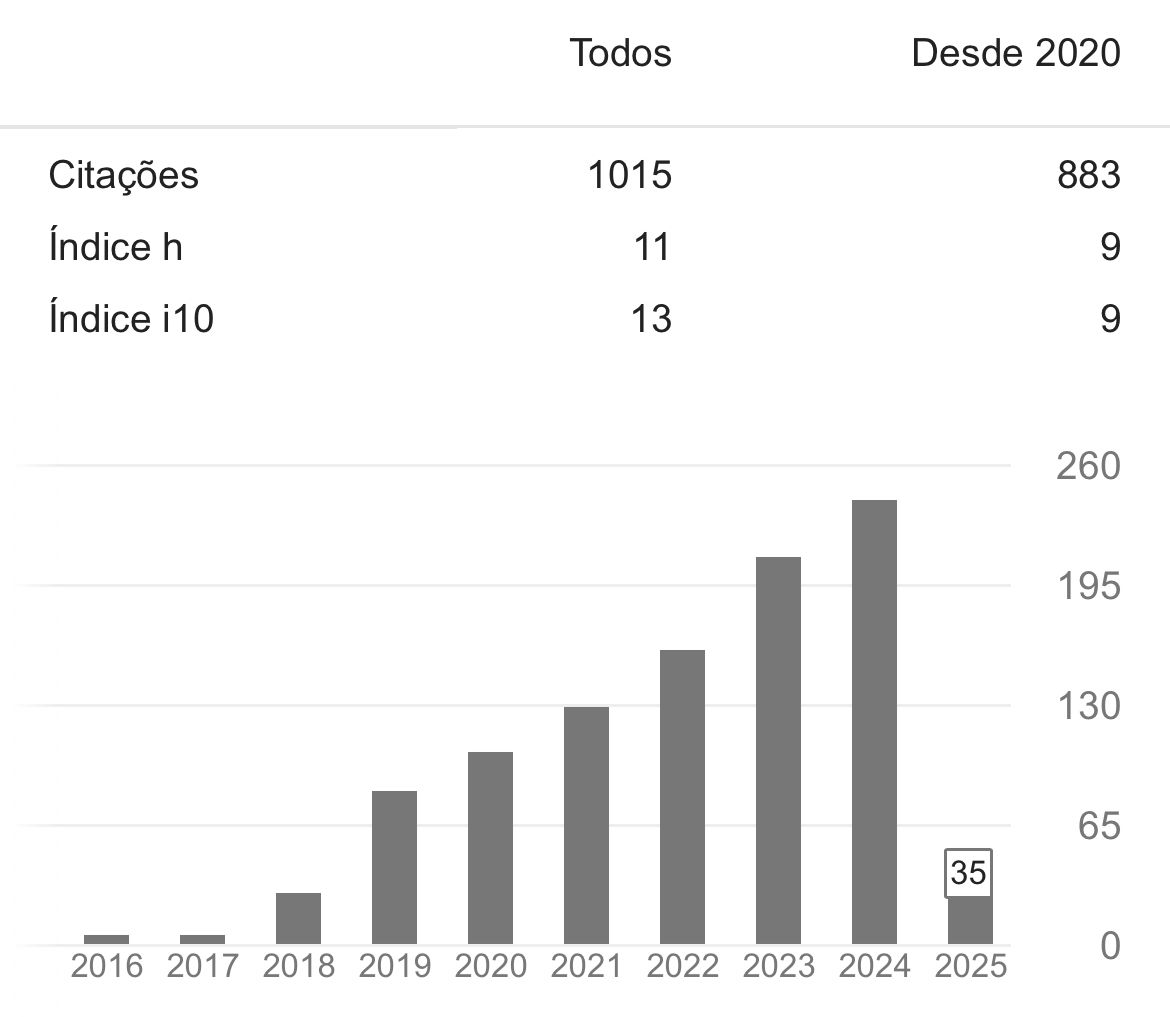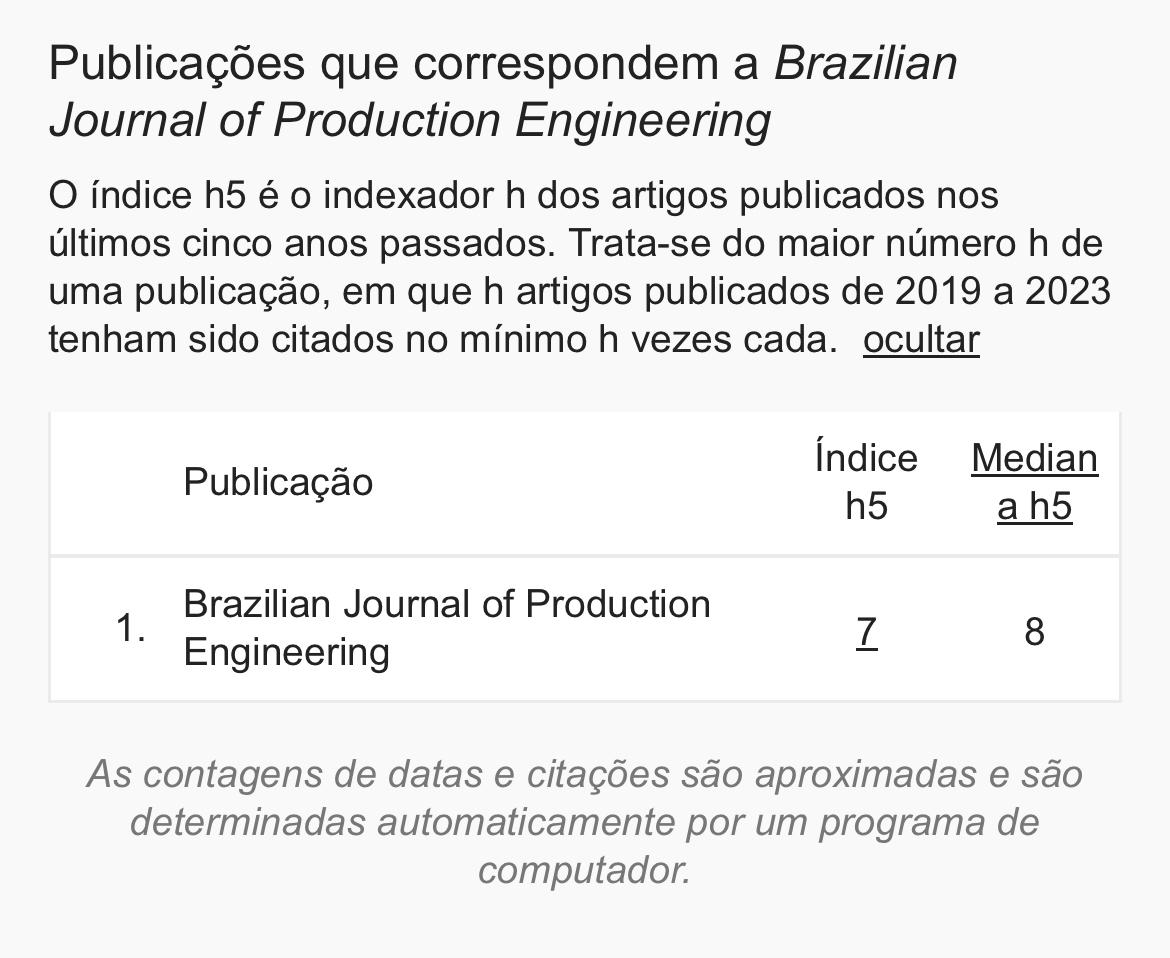Aplicação do ciclo DMAIC para redução de custos de uma indústria manufatureira de fraldas descartáveis
DOI:
https://doi.org/10.47456/bjpe.v10i2.44292Palavras-chave:
Seis sigma, Ciclo DMAIC, melhoria do processo, redução de custosResumo
O presente trabalho é um estudo de caso que aplica o DMAIC em uma indústria manufatureira de fraldas descartáveis com o objetivo de identificar desperdícios e propor soluções. O trabalho foi dividido em cinco etapas (Definir, Medir, Analisar, Melhorar e Controlar) e inicialmente identifica um consumo excessivo de dois componentes das fraldas infantis. A seguir, realiza uma investigação e análise do processo produtivo para descobrir as causas deste problema, cria um plano de ação, executa ações de melhoria e valida a eficácia das ações de modo a reduzir os impactos ambientais e financeiros do problema. Os resultados mostram uma estimativa anual de redução de custos de aproximadamente R$ 570.000,00, alcançada sem a necessidade de investimentos. Ao fim, cria métodos de controle para assegurar os benefícios das melhorias implementadas.
Downloads
Referências
Appolinário, F. (2004). Dicionário de Metodologia Científica. um guia para a produção do conhecimento científico. São Paulo: Atlas, 2004.
Beckert, S. F. & Paim, W. S. (2017). Critical analysis of the acceptance criteria used in measurement systems evaluation. International Journal of Metrology and Quality Engineering, 8, 23. DOI: https://doi.org/10.1051/ijmqe/2017016
Bunce, M., Wang, L., & Bidanda, B. (2008). Leveraging Six Sigma with industrial engineering tools in crateless retort production. International Journal of Production Research. DOI: https://doi.org/10.1080/00207540802230520
Carvalho, L. S. R., Menezes, A. H. N., Duarte, F. R., & Souza, T. E. S. (2019). Metodologia científica: teoria e aplicação na educação a distância.
César, F. I. G. (2011). Ferramentas Básicas da Qualidade. Editora Biblioteca24horas.
Chen, Y., Liu, J., & Li, C. (2016). Lean Six Sigma Implementation in Electronics Manufacturing: A Case Study of XYZ Company. Procedia CIRP, 56, 57-62.
George, M. L. (2002). Lean Sigma: Combining Six Sigma Quality with Lean Speed. McGraw-Hill.
Gil, A. C. (2002). Como elaborar projetos de pesquisa (4th ed.). Atlas.
Glushkovsky, A. (2006). Stability Index of Stochastic Processes: The Statistical Process Control Approach. DOI: https://doi.org/10.1515/EQC.2006.87
Gonsalves, E. P. (2003). Iniciação à pesquisa científica. Alínea.
Gupta, V., Jain, R., Meena, M. L., & Dangayach, G. S. (2018). Six-sigma application in tire-manufacturing company: a case study. Journal of Industrial Engineering International, 14, 511-520. DOI: https://doi.org/10.1007/s40092-017-0234-6
Henny, H., Andriana, I., Latifah, A. N., & Haryanto, H. (2019, November). The Application Lean Six Sigma Method Approach to Minimize Waste. In IOP Conference Series: Materials Science and Engineering, 662(2), 022089. IOP Publishing. DOI: https://doi.org/10.1088/1757-899X/662/2/022089
(n.d.). Independence and Stability. Dunamath. Recuperado de https://dunamath.com/autocorrelation_stability.aspx
Indrawati, S. & Ridwansyah, M. (2015). Manufacturing continuous improvement using lean six sigma: An iron ores industry case application. Procedia Manufacturing, 4, 528-534. DOI: https://doi.org/10.1016/j.promfg.2015.11.072
Ishikawa, K. (1997). Controle de Qualidade Total. Elsevier.
Javaid, M., Haleem, A., Singh, R. P., & Suman, R. (2021). Significance of Quality 4.0 towards comprehensive enhancement in manufacturing sector. Sensors International, 2, 100109. DOI: https://doi.org/10.1016/j.sintl.2021.100109
Lee, S., Kim, S., & Park, J. (2017). Application of Lean Six Sigma to Reduce Defects of Automotive Products. Procedia Engineering, 174, 827-834.
Mandahawi, N. & Obeidat, S. M. (2012). Six Sigma implementation to minimise weight variation for Baby Lido Diaper manufacturing company. International Journal of Six Sigma and Competitive Advantage, 7(2-4), 243-255.
McGraw-Hill Education.Mandahawi, N., & Obeidat, S. M. (2012). Six Sigma implementation to minimise weight variation for Baby Lido Diaper manufacturing company. International Journal of Six Sigma and Competitive Advantage, 7(2-4), 243-255. DOI: https://doi.org/10.1504/IJSSCA.2012.053472
Martinelli, F. B. (2009). Gestão da Qualidade Total. Fundação Biblioteca Nacional.
Montgomery, D. C. & Runger, G. C. (2021). Estatística Aplicada e Probabilidade para Engenheiros. 7ª edição. Grupo GEN.
Oakland, J. S. (2003). Total Quality Management text with cases (3rd ed.). Routledge.
Pande, P. S., Neuman, R. P., & Cavanagh, R. (2001). Estratégia Seis Sigma: Como a GE, a Motorola e outras empresas estão aguçando seu desempenho. Rio de Janeiro.
Patyal, V. S., & Maddulety, K. (2015). Interrelationship between total quality management and six sigma: A review. Global Business Review, 16(6), 1025-1060. DOI: https://doi.org/10.1177/0972150915597607
Pongboonchai-Empl, T., Antony, J., Garza-Reyes, J. A., Komkowski, T., & Tortorella, G. L. (2023). Integration of Industry 4.0 technologies into Lean Six Sigma DMAIC: A systematic review. Production Planning & Control, 1-26. DOI: https://doi.org/10.1080/09537287.2023.2188496
Pyzdek, T. & Keller, P. A. (2018). The Six Sigma Handbook: A Complete Guide for Green Belts, Black Belts, and Managers at All Levels (5th ed.). McGraw-Hill Education.
Rechulski, D. K. & Carvalho, M. M. (2003). Programas de qualidade seis sigma: características distintivas do modelo DMAIC e DFSS. Produção em Iniciação Científica da Escola Politécnica da USP.
Rotondaro, R. G. (2002). Seis Sigma: Estratégia Gerencial para a Melhoria de Processos, Produtos e Serviços. Editora Atlas S.A.
Smith, J. R., Jones, L. M., & Patel, K. (2019). Improving Efficiency in Food Manufacturing: A Lean Six Sigma Approach. International Journal of Lean Six Sigma, 10(5), 740-758.
Vergara, S. C. (2006). Projetos e relatórios de pesquisa em Administração. Atlas.
Tenera, A. & Pinto, L. C. (2014). A Lean Six Sigma (LSS) project management improvement model. IPMA World Congress. DOI: https://doi.org/10.1016/j.sbspro.2014.03.102
TSHTurkey. Baby Diaper Raw Material. Recuperado de https://www.tshturkey.com/en/baby-diaper-raw-material.html
Widodo, A. & Soediantono, D. (2022). Benefits of the six-sigma method (dmaic) and implementation suggestion in the defense industry: A literature review. International Journal of Social and Management Studies, 3(3), 1-12.
Werkema, C. (2012). Criando a Cultura Lean Seis Sigma (3rd ed.). Elsevier.

Downloads
Publicado
Como Citar
Edição
Seção
Licença
Copyright (c) 2024 Brazilian Journal of Production Engineering

Este trabalho está licenciado sob uma licença Creative Commons Attribution-NonCommercial-ShareAlike 4.0 International License.

Atribuição 4.0 internacional CC BY 4.0 Deed
Esta licença permite que outros remixem, adaptem e desenvolvam seu trabalho não comercialmente, contanto que eles creditem a você e licenciem suas novas criações sob os mesmos termos.
















































































